|
|
|
|
|
Korea at a Glance |
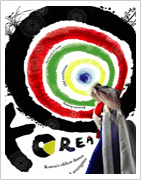
Often referred to as the “Land of the Morning Calm,” Korea has a population of 48.74 million (2009) and a total land area of 100,032 ㎢ (2008). Located at a major crossroads of Northeast Asia, it has also achieved the “Miracle of the Han River”. As early as the 1960s, when the country's five-year economic development plan was first implemented, the Korean economy has relentlessly shown signs of exponential growth. From 1962 to 2005, the country's GNI surged from US$ 2.3 billion to a staggering US$ 786.8 billion. The 1997 East Asian foreign currency crisis was only a temporary set-back for the Korean economy. The GNI stagnated at US$ 340.4 in 1998 but soon began to advance again, soaring to US$ 955.8 billion by 2007.
Years of rapid economic development propelled the country into becoming the world's 12th largest trading partner. Korea's industrial base shifted from agriculture to manufacturing and is now shifting to services. A global force in a number of significant industries, including automobiles, petrochemicals, electronics, shipbuilding, textiles, and steel, Korea's GDP expanded 5.0 % in 2007 and 2.5 % in 2008. GDP in 2007 totaled US$ 969.8 billion, making the country the 14th largest economy. |

Since 2004, Korean-made semi-conductors, automobiles, and wireless telecom devices have accounted for over 30 % of the country's total trade volume. Exports of IT products have risen every year since 1998 and reached US$ 82.5 billion, or 29.5 % of total exports, in 2005. Major IT export items include memory chips, mobile phones, LCD monitors, PCs, and satellite broadcasting receivers. Korea's semi-conductor industry, in particular, has achieved tremendous growth over the past two decades and is the third largest in the world. |
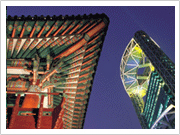
The system of government in Korea is based on a system of checks and balances between the executive branch, the legislature, and the judiciary. The president is elected directly for a single five-year-term. South Korea’s 17th president, Lee Myung-Bak, was sworn in to office on February 25, 2008. |
Current Korean Weather Conditions |
Korea has four seasons, with a wet monsoon/summer in the middle of the year, and a cold winter from November to March. The island of Jeju off the southern coast is the warmest and wettest place in the country. The most ideal time to visit Korea is during the autumn months (September~November). During this time, the country experiences warm, sunny weather, skies are cobalt blue and the spectacular foliage is perhaps the biggest draw. Winters are cold and dry and remain a good time if you are interested in winter sports as there are numerous ski resorts. Spring (April~May) is also beautiful with all the cherry blossoms in bloom. However, it is very busy and one needs to book in advance to ensure accommodation is available. The summer months are muggy and hot, and rather crowded. It is also when the monsoon begins so many activities are subject to the fluctuations of heavy rain. |
Four Distinct Seasons |
Korea's climate is regarded as a continental climate from a temperate standpoint and a monsoonal climate from a precipitation standpoint. The climate of Korea is characterized by four distinct seasons: spring, summer, fall, and winter. |
| |
Spring |
 |
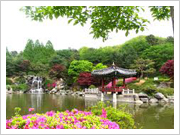 |
 |
| Spring lasts from late March to May and is warm. Various flowers, including the picturesque cherry blossom, cover the nation's mountains and fields during this time. |
|
Summer |
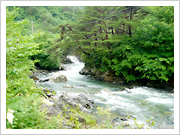 |
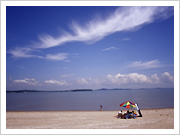 |
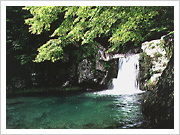 |
| Summer lasts from June to early September. It is a hot and humid time of the year. |
|
Autumn |
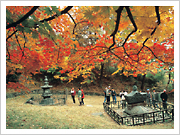 |
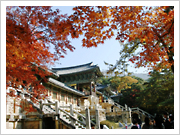 |
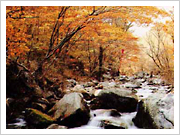 |
| Autumn lasts from September to November, and produces mild weather. It is the best season for visiting Korea. |
|
Winter |
 |
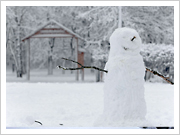 |
 |
| Winter lasts from December to mid-March. It can be bitterly cold during this time due to the influx of cold Siberian air. Heavy snow in the northern and eastern parts of Korea makes for favorable skiing conditions. |
|
Korean Language |
Hangeul - Korea’s Official Alphabet |
Hangeul (한글), Korea’s official alphabet, was first invented by King Sejong during the Joseon Dynasty. Originally called Hunminjeongeum (훈민정음), the language was conceived in 1443, and further promulgated by the King in 1446. At the time of its inception, the language consisted of 17 consonants and 11 vowels however, since then, 3 of the originally established consonants and 1 vowel have fallen into disuse bringing the total number of characters to 24. Syllables are formed by the selective combination of vowels and consonants to create words.
The official name for the Korean language was changed to 'Hangeul' in 1910. Hunminjeongeum Proclamation Day was called ‘Gagya Proclamation Day’ up until 1926, and it wasn’t until 1928 that it was changed to its current title, ‘Hangeul Proclamation Day’.
The chart below represents the 24 Hangeul characters together with their romanized equivalents. 'The Hunminjeongeum,' a historical document which provides instructions to educate people on the use of Hangeul, is registered with UNESCO. UNESCO awards a 'King Sejong Literacy Prize,' every year in memory of the inventor of Hangeul. |

Hangeul written in syllabic units made up of two, three, or four letters. |
Hangeul |
| Consonants |
| ㄱ |
g, k |
ㅂ |
b, p |
ㅋ |
k |
| ㄴ |
n |
ㅅ |
s |
ㅌ |
t |
| ㄷ |
d, t |
ㅇ |
ng, silent |
ㅍ |
p |
| ㄹ |
r, l |
ㅈ |
j |
ㅎ |
h |
| ㅁ |
m |
ㅊ |
ch |
|
|
| Vowels |
| ㅏ |
a |
ㅗ |
o |
ㅠ |
yu |
| ㅑ |
ya |
ㅛ |
yo |
ㅡ |
eu |
| ㅓ |
eo |
ㅜ |
u |
ㅣ |
i |
| ㅕ |
yeo |
|
|
|
|
|
|
|
|
|
|
|
|
|
|
|
|
|